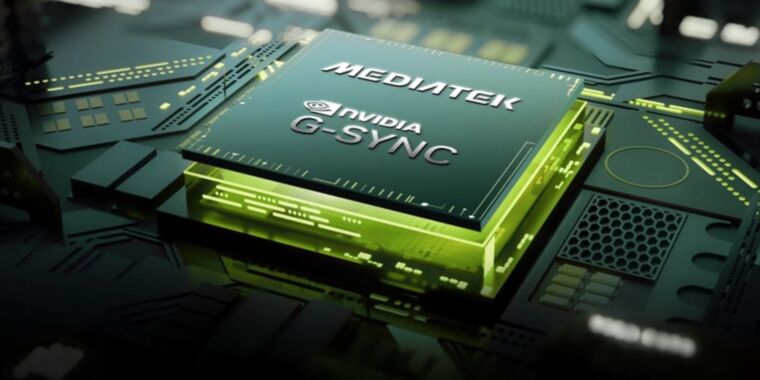Back in 2013, Nvidia introduced a new technology called G-Sync to eliminate screen tearing and stuttering effects and reduce input lag when playing PC games. The company accomplished this by tying your display’s refresh rate to the actual frame rate of the game you were playing, and similar variable refresh-rate (VRR) technology has become a mainstay even in budget monitors and TVs today.
The issue for Nvidia is that G-Sync isn’t what has been driving most of that adoption. G-Sync has always required extra dedicated hardware inside of displays, increasing the costs for both users and monitor manufacturers. The VRR technology in most low-end to mid-range screens these days is usually some version of the royalty-free AMD FreeSync or the similar VESA Adaptive-Sync standard, both of which provide G-Sync’s most important features without requiring extra hardware. Nvidia more or less acknowledged that the free-to-use, cheap-to-implement VRR technologies had won in 2019 when it announced its “G-Sync Compatible” certification tier for FreeSync monitors. The list of G-Sync Compatible screens now vastly outnumbers the list of G-Sync and G-Sync Ultimate screens.
Open standards always win. Just buy FreeSync and get an AMD GPU.
They always win, unless they don’t. History is littered with examples of the freer standard losing to the more proprietary standard, with plenty of examples going the other way, too.
Openness is an advantage in some cases, but tight control can be an advantage in some other cases.
OpenGL 😞
Up until relatively recently, it was great to see that Vulkan and DX12 were in a practically even split.
Still great to see that some of the best talent in terms of visual fideltiy showcases Vulkan, like rdr2 (originally defaulted to dx12, now vulkan), doom eternal and so on. Fully expect the next GTA to.
stadia was derp but it forced interested publishers to get acquainted with vk. I think it ended up doing more good for the industry in the end as a failure, rather than harm by succeeding and locking subscribers into such a restrictive game “ownership” paradigm.
Obsolete by Vulkan. Which is open-source.
OpenGL is a bit more complicated since it’s more than just a specification in practical terms. The documentation and tooling for OpenGL was really awful compared to Direct3D. This is a huge issue when developers are working on implementing features. For instance, the documentation for glReadPixels is incorrect for years and you would have to refer to the wiki for it instead. Yet, the only way you would know this is if you scoured the internet and happened to find a StackOverflow page asking about symptoms that may not even match your issue.
Thankfully, Vulkan seems to be a lot better in this regard but I still curse the heavens everytime I need to go back to OpenGL when supporting older hardware.
Awwwwwwwww… poor nVidia loses again.
This is silly.
Gsync solved a problem that couldn’t be solved before they made it. They stayed committed to that good solution until there was an alternative that reached a reasonable level of performance, then supported both until they could get close without the expensive extra hardware.
Was it worth it? For most people no. But it’s still technically superior today and there are loads of options without the extra cost.
VESA Adaptive-Sync goes back to the eDP stardard, 2009. AMD simply took that and said “Hey why aren’t we doing that over external DisplayPort”. And they did.
So instead of over-engineering a solution that nobody asked for to create vendor lock-in nobody (but fanboys with Stockholm Syndrome) want they exposed functionality that many many panels already had, anyway, because manufactures don’t use completely different control circuitry for laptop (eDP) and stand-alone monitors.
And, no, nvidia’s tech is not superior. From what I gather they have stricter certification requirements but that’s it.
Gsync modules have a lower sync window before LFC kicks in (usually around 30), and faster pixel response (overdrive) anywhere in the sync window. Those are benefits for both high framerate content and low framerate content.
Even today freesync usually bottoms out around 48. That constantly puts you at the LFC boundary for a lot of AAA games if youre on a popular midrange graphics card and aiming for 60fps average.
Just to address this from a high level, I see this as typical of Nvidia and AMD approaches. Nvidia makes something that’s engineered to perfection, but adds a bunch of requirements on it that make it expensive and supports vendor lock-in. Even if you’re willing to put with that to have The Best, you might hesitate when finding out what assholes Nvidia are about everything.
AMD then makes something 95% as good, and it’s cheap and you can work with them without yelling.
See also: FSR vs DLSS.







